Humanities Q1
History
Paleolithic
Paleolithic stands for “Old Rock“
No written language invented yet
Hominids:
Australopithecus (South Ape Man)
1.5 mya Homo Erectus (Upright man): had the ability to walk on two feet
1.5 mya Homo Habilis (Skilled man): discovered fire and commonly used stone tools
200k ya Homo Sapiens Sapiens (Wise Man): Made society, farming, cities, sitcoms, war, and calculus
During the Paleolithic, they were egalitarian hunter-gatherers
Possessed stone tools
Tight-knit societies with the main religion as animism (tree spirits and stuff)
(100k-60k) Humans start migrating out of Ethiopia and leave behind wall paintings
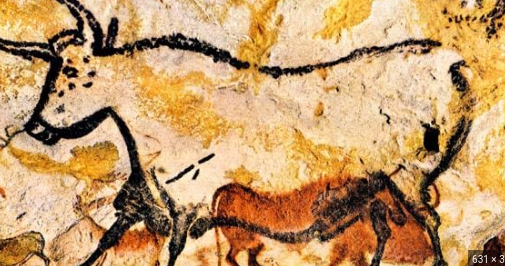
Neolithic and Early Civilization
Agricultural Revolution I
Farming began around 8K BCE in the fertile crescent (Mesopotamia)
Mostly only cereal grain was farmed (millet, rice, wheat, barley)
Data suggests that it was probably created by women
Results:
Surplus of food leads to job specialization
Practically, not everyone has to farm and can do other things like make clothes or like make laws
People didn’t die of hunger quickly, so population increased
New Technologies (i.e. wheel, axle, writing, chariot, etc.)
Complex systems (i.e. Governments, money, writing, taxes, sports, and executions, recipes)
Writing
Social Hierarchy aka inequality
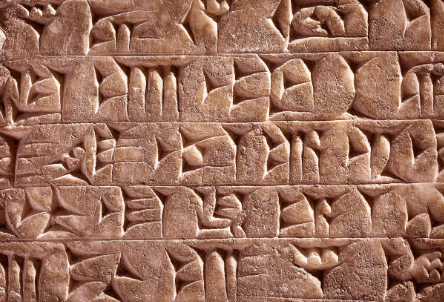
Characteristics of Civilizations(Should have some, not all):
Advanced Cities (Practically some sort of building)
Specialized labor
Complex Institutions (Practically anything run by more than 1 person)
Record Keeping (Writing for taxes and stuff)
Tech (man made things like barrels and clothes and wheels and stuff)
Mesopotamia
Between the Tigris and Euphrates
Big city-states: Babylon, Ur, Uruk, Akkad, Sumer, Assyria
Created agriculture first
They also had a base 60 number system
NOT Centralized — City States fighting for power. This, combined with their geography, would make it very easy for the region to get conquered.
All had similar religion and language
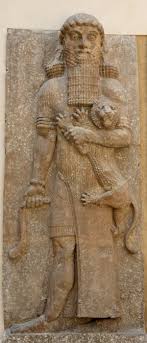
Egypt
Based on the Nile River
Very Unified
King was called Pharaoh
Kingdoms:
Old (2705 - 2213 BCE): Not much here except the Pyramids (big one for Khufu) and the Sphinx
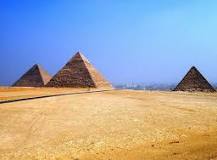
Middle (2050 - 1650 BCE): Not important
Akhenaten (1353 - 1336 BCE): Weirdo Pharaoh that believed that there was only 1 god and married Nefertiti. He also chose to be shown in a sitting position

New (1550-1070 BCE): Most important part. Had many famous rulers such as Ramses and King Tut
Geography
Most of the civilization was built along the Nile River, which flooded so predictably that the Egyptians based their calendar off of it. Also, whenever the river flooded, it enriched the soil, allowing for effective agriculture
Culture
During the Old Kingdom, the early pharaohs ordered the creation of pyramids for their grave, but they learned real quick that they were getting robbed, so pyramids stopped getting built
Much of the civilization’s polytheistic religion was based on death, Osiris, and the sun, Amon/Ra and the biggest temple is located in Heliopolis (meaning “sun-city” in Latin)
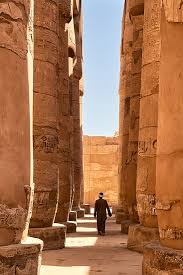
Amenhotep IV (1353-1336 BCE) decides to get rid of the gods so that everyone can worship a single god, Aten, and changes his name to Akhenaten. This is hated by pretty much everyone, so after he dies, he is defaced and the rest of the gods are brought back
The Egyptians believed in immortality in the afterlife which was ruled by Osiris, the sun, who was Amon/Ra/Amon-Ra, and in Horus, who represented the power of the pharaoh
Side Note: They also worshiped cats, so much so that they got conquered because of it.
The civilization’s art style represented the Pharaoh mostly in regal, perfect positions to highlight their divinity and in reliefs, everyone is shown in profile (like the song “walking like an Egyptian”)
Egyptian Society had high levels of social stratification
Pharaoh: This role was commonly prescribed to men, but there were some women in this position. The role of the pharaoh was mainly religious with him being a sort of god-king
Intellectuals: These included nobles, priests, and scribes (One person could be all of this) and they made up the upper levels of the society, running governments, fighting wars, etc
Artisans: These included tradesman and merchants and they made the bulk of the lower class.
Slaves: This group was mostly derived from minority groups and from those taken from war campaigns. They were brutally treated.
Political
Originally, Egypt was divided into 2 kingdoms, the upper and lower kingdoms but in 3100 BCE, King Menes united both of the kingdoms to start the Old Kingdom.
The New Kingdom was founded by Ahmosis when he banished the Hykos people in 1550 BCE. During the New Kingdom, they expanded all the way to Palestine and Syria (Side Note: Tuthmosis III invaded the region 17 times). Also during this time period, heiroglyphic education became an important part in becoming a professional.
China
The Chinese civilization is the longest lasting civilization and it is the only early civilization to still survive to this day. All others were conquered by outsiders.
The Chinese Dynasties (sing to Brother John):
Shang
Zhou
Qin
Han
Sui
Tang
Song
Yuan
Ming
Qing
Republic
Chinese Dynastic Cycle:
A strongman unites the region into unified rule and establishes a dynasty
The dynasty prospers and the population increases
The dynasty faces some new problems such as invasion, famine, or disease
The problems increase as the dynasty is unable to cope with the new problems and loses the Mandate of Heaven
The people are unsatisfied with the dynasty and the farmers rebel against the dynasty
The dynasty collapses from inward pressure
The country is divided among warlords who commonly wage war against others and due to their actions, many die due to conflict and famine
A strongman emerges and unites the warring regions under his rule
Mandate of Heaven: An ideology created during the Zhou dynasty in which the Emperor has the right to rule because the heavens had said so (similar to Divine Right To Rule)
Shang Dynasty: They were the first dynasty based mainly around the Huang-He/Yellow River
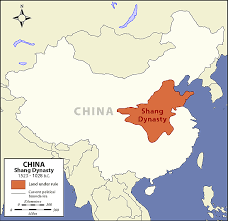
Zhou Dynasty (1027 - 221 BCE): This dynasty founded the Mandate of Heaven and during this time multiple philosophies were formed
Confucianism: Founded by Confucius, this philosophy is centered on a person’s loyalty to family and nation and promoted harmony
Daoism/Taoism(Ying Yang): Founded by Lao Tsu, this philosophy centers on maintaining harmony by connecting in nature.
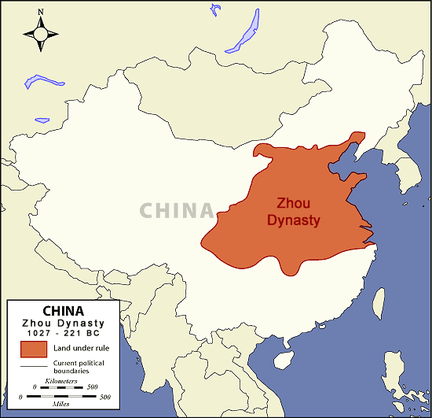
Qin (221 BCE): This dynasty was responsible for naming the ruler as the emperor and their most famous/ founder emperor was Shi Huang-Ti who standardized language, established legalism, and was in general a very mean guy.

Indus
There is pretty much no info on these guys because we can’t understand their language, but their major cities are Harappa and Mohenjo-Daro and they were centered on the Indus River in modern day Pakistan.
Greece and Persia
Minoans
The Minoan language is indecipherable, and thus, their name comes from King Minos, one of the legendary kings of Crete and was named by the British Sir Arthur Evans. It is important to note that the Minoans aren’t Greek in any sort of way or form. They just inspired the Greeks a lot.
Much of the civilization’s economy relied on the sea, relying on trade and fishing to support them.
The culture was one of the more gender equitable societies, leading to the cults of Artemis and Hera (they later became parts of the Greek Pantheon). Their culture also worshiped bulls and the king, who ruled from Knossos, also had roles as a priest.
Fun Fact: They had toilets, climate control, and good wall art (not graffiti)
Their civilization was destroyed around 1400 BCE due to conflict, arson, and earthquakes.
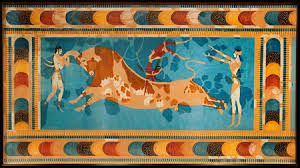
Mycenaeans
The Mycenaeans (1600 - 1100 BCE) are ethnically Greek and live on the islands of Mycenae and Tiryns and they copied off much of their culture from the Minoans, Egyptians, and Hittites. IMPORTANT: Trojan War (1250 BCE) happened during their reign
Homer’s Version:
3 goddesses debate on whose the best looking and through a series of unfortunate events, Helen, wife to the brother of Agamemnon, the King of Sparta, runs away/gets kidnapped by Paris of Troy, a city in Anatolia.
Greeks under Agamemnon get mad and with Odysseus’s (King of Ithica) help, they declare war against Troy
10 years later: Hector kills Patrolacus. Achilles kills Hector. Paris kills Achilles. Odysseus makes a big horse. Troy gets “sacked“. Helen goes back home. Greeks win. YAY!
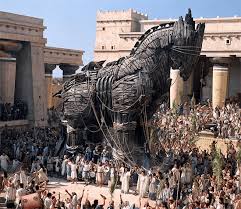
What actually happened:
Hittites in Troy block trade with the Mycenaeans
King Agamemnon of the Mycenaeans declares war on the Hittites and sacks them. Kinda boring, don’t ya think
The Mycenaeans fall into civil war and then invaded circa 1100 BCE
Persia
In the beginning, Mesopotamia is conquered by the Medes people, a group from the Hindu Kush and Zagros Mountains, circa 612 BCE. Then, the Persian group comes and conquers the Medes.
Religion:
Had the first major monotheistic (technically it is dualist, but who cares) religion of Zoroastrianism founded by Zoroaster
Ahura Mazda (Good God) vs Angra Mainyu (Bad God)
Kings tried to rule with asha (truth) to battle druth (lie)
Weird Cyrus the Great:
When Cyrus the Great captured the Lydian king, instead of killing him, he made the king his advisor
When Cyrus conquered Babylon, he fixed the city up and made it the capital
He was so tolerant that he allowed people to worship their own religion
He made groups pay tribute to him and then let them chill
Cambyses II was Cyrus’s son and he mainly just conquered Egypt with cat
Darius I
Under Darius, the empire was organized into 20 satrapies, each with their own governor and army
He created The Road, a 1600 mile long path, which had stops for important officials every couple miles. Very organized
In the Anatolian Coast, there is a small Greek minority.
Athens
The first democratic society in which only city-born, free, men could vote.
In the beginning, there is a famine, so they appoint Draco to manage, but he’s draconic, so he is replaced by Solon, but that doesn’t work out so Perides takes control and he promotes the arts and stuff. They also had a very efficient navy.
The city’s patron goddess is Athena, whom the city is named after. The acropolis is also located in the city.

Sparta
They were the ultra-super-duper-mega-extreme warriors, mainly due to the fact that after the Messian War, all the Messians became their slave and did all the pointless, leaving time for the Spartans to learn how to kill and slaughter.
Military training commonly started at age 7 for boys and it was horrifyingly brutal, but turns out they learned dancing and writing. Girls also received an education, but not a formal one. Women were also expected to know how to fight so that they could protect her children if they are invaded.
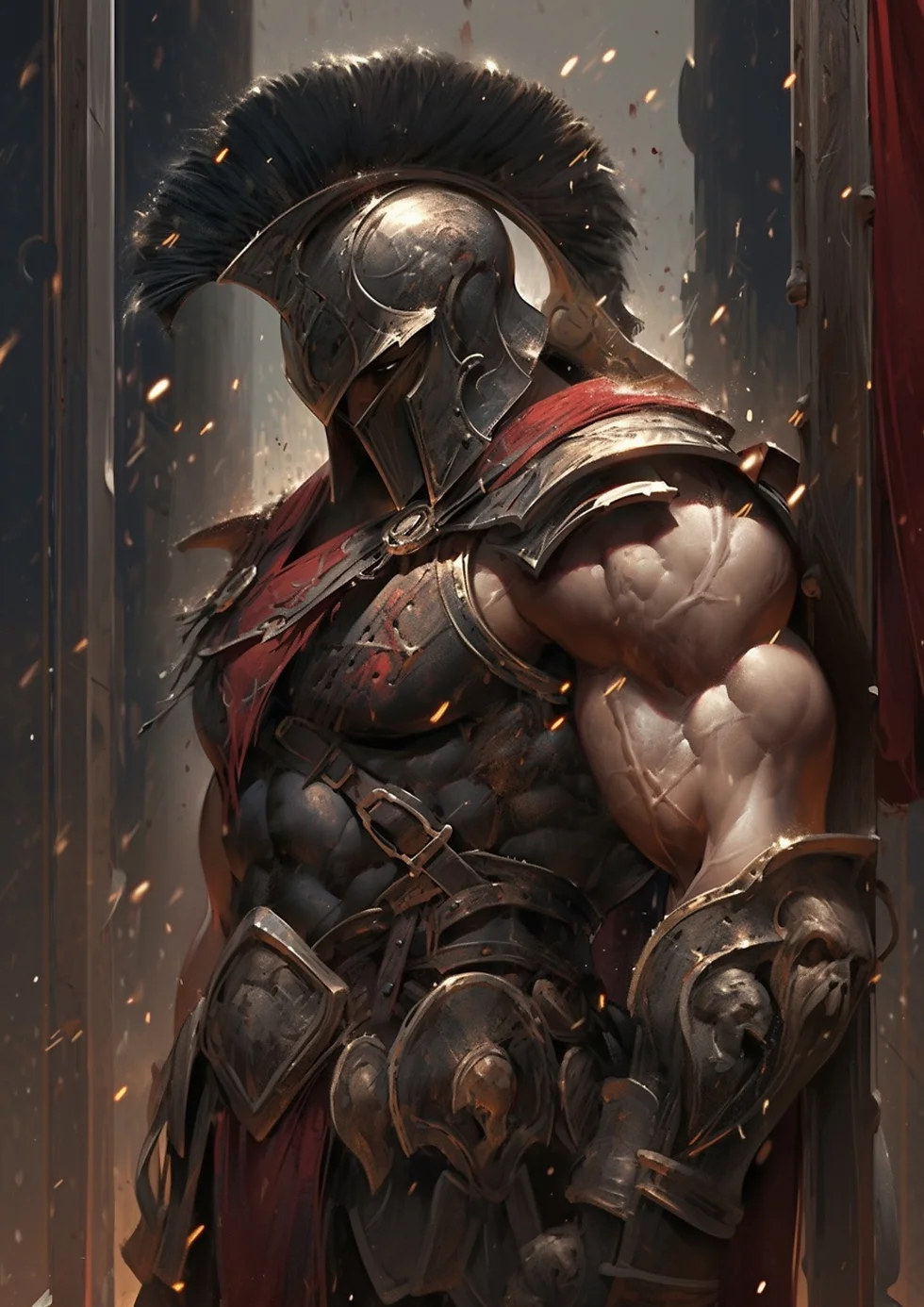
The Government was composed mainly of nobles, but they had 2 kings, so that neither one could overpower the other and establish a dictatorship (for a bunch of jocks, this is impressive).
Greco-Persian Wars
First Greco-Persian War
Ionians in Persian occupied Anatolia are sad so they rebel against Persia, which is supported by Athens, but they are brutally crushed by the Persian military.
Darius takes his stupidly large army to fight the Greeks and they meet at the Battle of Marathon.
90k Persians vs 10k Greeks
Persians are using archers, but Greeks make the fight hand-to-hand (turns out, bendy wooden sticks with strings doesn’t work well against shiny metal sticks)
Persians are ashamed and retreat
Second Greco-Persian War (480 BCE)
Xerxes, Darius’s son, is still ashamed, so he does a double pronged attack on the Greeks.
He takes his army, kills a couple of Spartans at Thermopylae, and then sacks Athens
Athenian Navy fights the Persian Navy, but a massive storm destroys most of the Navy and the Athenians make quick work of the remaining Persian fleet, but it doesn’t matter because Athens was already sacked.
Finally, 110k Greeks unite and defeat the Persians at Platea
Peloponnesian War
After the Greco-Persian Wars, Athens became a superpower and was expanding quickly, which Sparta didn’t like.
Peloponnesian League (small allies not included):
Sparta
Corinth
Persia
Delian League (small allies not included):
Athens (1 democratic city versus 3 bloodthirsty warrior race empires. What could go wrong)
The first was a tie but in the 2nd, Corinth attacks Athenian allies, restarting the war. Sparta joins because Corinth is its ally, but Persia joins in because they really really want to beat up the Athenians.
Peloponnesian League gets closer, so Athens moves everyone to be inside the city walls, but that backfires on them as disease breaks out
Athens sacked (again) and Persians capture the Athenian fleet
Alexander The Great
After the Peloponnesian Wars, Greece was vulnerable, so the Macedonians invade, conquer, and unify Greece under King Phillip II, but he is assassinated by the Persians. This makes Alex very angry.
Thebes revolts against Macedonian rule so Alex comes and puts down the revolt very quickly. The rest of Greece is now scared of Alex.
Alex now goes on a conquering spree where starts hunting down the Persians.
Fast forward 10 years: Persia doesn’t exist anymore. Alex has established the largest empire yet. Greek influence has been spread everywhere between Greece and India. Alex gets an digestive infection and dies (you can call it food poisoning)
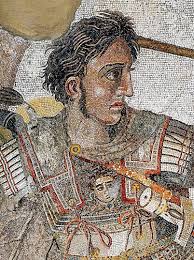
English
Code of Hammurabi
“Eye for an eye/ Tooth for a tooth“
Basically a set of laws made by Hammurabi, a king of Babylon, where he set many of the basic principles of law. The Code contains many interesting aspects, such as fair wages, freedom at birth, and retribution. It can also be used to show what the community found as important. (Fun fact, if you didn’t know how to swim, you could be considered guilty for pretty much all the crimes)
Hero’s Journey/ Joseph Campbell’s Monomyth
“There are no more original stories!“ - Mr.Whiteside
Departure
The Ordinary World
The Call to Adventure
Refusing the Call to Adventure
Meeting the Mentor
Crossing the Threshold
Initiation
Test, Allies, and Enemies
Approach to the Inmost Cave
The Ordeal
The Reward
Return
The Road Back
Resurrection
Return With the Elixir
Epic of Gilgamesh
This is one of the first written stories ever and the main character, Gilgamesh, was a real king of Uruk, but the story was written way after, so most of its made up. This story also has the original flood story.
The Ordinary World:Gilgamesh is a horrid king, but is the strongest person around and the son of a goddess, so instead of rebelling, the people call of the gods to create his equal. Enkidu is created and he lives like a wild beast in the forest, until he is forced to come to the city, where he meets, fights, and becomes friends with Gilgamesh.
The Call to Adventure: Enkidu is getting bored in the city, so Gilgamesh proposes that the duo go and kill Humbaba, a lion headed man who loves Cedar trees.
Refusing the Call to Adventure: Enkidu is scared, so he plees Gilgamesh not to go, but Gilgamesh doesn’t listen.
Meeting the Mentor: The duo have left Uruk to go to find Ninsun, Gilgamesh’s mother, so that they can receive her blessings and her wisdom.
Crossing the Threshold: The duo travel many miles until they arrive at the gate of the cedar forest.
Test, Allies, and Enemies: The duo kill Humbaba and when they get home, Ishtar, goddess of love, wants to marry Gilgamesh, but he rejects her.
Approach to the Inmost Cave: Ishtar sends the Bull of the Heavens to destroy everything, but the duo kill the bull and Enkidu takes the bull’s leg and slaps Ishtar with it.
The Ordeal: The gods decide that the duo is too strong and must be killed. Enkidu is killed.
The Reward: Gilgamesh is now scared of death, so he leaves home to find Utnapishtim, the immortal man.
The Road Back: Gilgamesh finds Utnapishtim and learns about the flood story. He also learns of the flower of immortality.
Resurrection: After finding the flower, he decides to take a bath, but then, a snake take the flower away. Gilgamesh is sad.
Return With the Elixir: Gilgamesh goes back home empty handed, but the people love him.
The Odyssey
This is the story of Odysseus, the king of Ithica, who after fighting the Trojan war, get lost and comes back to a ruined kingdom.
The story starts out on Calypso’s island where he misses his home. He has been there for 7 years.
Back home, the reader learns that suitors have overrun the palace and Telemachus (his son) thinks his father is alive and wants to kill the suitors.
Odysseus escapes Calypso’s island and arrives to Scheria and tells the local king and queen everything that has happened.
After escaping the island of the lotus eaters, the group gets stuck on the Island of the cyclops and must stab out his eye to escape
The group now encounters the Scylla, a monster that has 6 hands, and it ate 6 men per ship.
They encounter the land of the sirens. Odysseus tells everyone to put wax in their ears and he ties himself to the mast so he can listen to the siren’s song
Fast Forward: Odysseus returns home, reunites with Telemachus, kills all the suitors, kills the unloyal servants, and then reunites with Penelope, his wife.
Allegory of the Cave
This is a story written by Plato which explains a lecture Socrates gave to him. In the story, a man is used to living in the dark and can only see shadows. He then escapes and gets used to the real world with sunlight. When he comes back to the cave, no one else believes him and refuse his actions to free him.
This is meant to symbolize that those that are enlightened won’t be accepted into society after their enlightenment and it is suggested that it is the people’s duty to follow the enlightened everytime, but it also pulls up the question of “Is this world real?“
 Knowt
Knowt